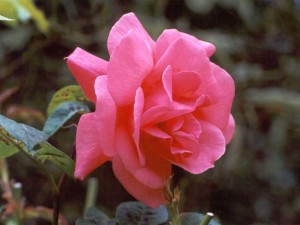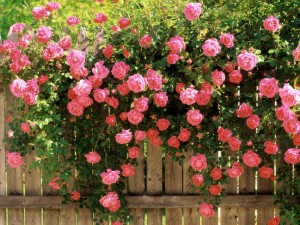Types of Rose

Known as Wild Roses, they have been growing in the wild for hundreds of thousands of years.
Wild roses/species roses are the parents of and the origins of the Old Garden Roses and the Modern Garden Roses.
Old Garden Roses And Moss Roses
These are roses that were cultivated before 1867, the year when the first hybrid tea ‘La France’ was introduced. The main groups of Old Garden Roses, heirloom old garden roses, heritage bushes of roses, whatever you choose to call these antique old roses from the past, include the following rose types:

Mostly white flowered, or pale pink roses that only bloom once. The foliage is a sage green colour.

The very first roses that repeat bloomed. They were introduced on the ‘Isle of Bourbon’ in the Indian Ocean – where these roses got their name. Bourbon roses are very fragrant.

Known as the ‘Cabbage Roses’, the flowers, looking like cabbages, usually have over 100 petals. These roses only bloom once.

The flowers are intensely fragrant and come in white, pink or red colours.
Some repeat-flower, some don’t.

Mostly once-blooming fragrant roses that produce a sort of sticky moss-like growth on their flower stems and buds.

These roses are tender and not for cold climates north of zone 7. Most are repeat flowering.

These roses are almost always without thorns. They flower once and the blooms are usually pink, red, or purple and have a strong rose fragrance.

Very fragrant pink or red roses that repeat flowers.

Large, sprawling rose plants that are best used as climbers.
They have small clusters of fragrant flowers.
These roses are cold-tender and best suited for warmer climates.

Roses that are very fragrant, usually pink blooms that are repeat- flowering.

These roses have canes with few thorns. The flowers come in light yellow, pink or white colours and are repeat-blooming. They grow best in zone 7 and the south.
Modern Garden Roses – are the roses that were introduced after year 1867 and afterwards.
Within these three groups of different types of roses and rose classes, roses are further divided by their growth habits, foliage and flower forms.
The different types of roses known as Modern Garden Roses are also divided into subdivisions.
These are the main types of rose for landscaping and home gardens. Most of them are repeat-flowering.

Long-stemmed flowers that are high-centred with usually one flower per stem.
They bloom on upright, rather narrow plants, and flowers in flushes of every six weeks or so.
This is the classic rose for cut flowers.

Shrub roses with clusters of flowers with continuous blooms. The growth habit is bushy and full. Floribunda roses are usually hardier than hybrid teas.

These are tall and vigorous plants that produce flowers singly or in clusters.
They are very similar to hybrid teas, except for their size.

Small flowered roses in large clusters on small compact free- flowering rose bushes.

This is a large group of various classes that vary widely in height and habit.
This group include the English Roses by David Austin

These are scaled down versions of the larger Modern Garden Roses, ranging in height from 6 inches to 2 feet tall.
Their flowers and leaves are proportionally diminutive.

A mixed group of roses with long arching canes that can be trained on a support such as arbours, trellises, fences, and walls.
Some are repeat-flowering, some are not.
 Check with your local gardening centre for the best type of roses to grow in your area.
Check with your local gardening centre for the best type of roses to grow in your area.If you are a novice, you should look for disease resistant types of roses because they require a lot less maintenance.
When planting roses, you want to pick a spot that is well lit in the morning. You also want an area that is sunlit for at least 6 hours a day.
Roses need a great deal of light if they are to grow properly.
Pick an area that has plenty of well drained soil. Great soil has a PH level where the amount of acid in the soil is at about 5.5-7.0. You can get a testing kit for your soil at any garden centre.
Organic matter like manure or lime helps to nourish the roots of your roses. You should soak the roots in water or puddle clay for many minutes, and cut off the root’s ends that are broken.
The first 3-4 weeks after planting your roses, you should water them often. Usually this is when the top 2 inches of soil is dry. Roses need a lot of hydration and food to remain healthy.
Four weeks after planting, you should start soaking the bed every 2 weeks or so. You should do this in the morning for the best results.
Begin fertilization approximately 3 months after planting. Use 3-6 inches of mulch to control the moisture, temperature, and to stops weeds from coming up. Mulch also helps to lock in the vital nutrients your roses need in order to remain healthy.
Planting in the spring is the best.
You want to plant your roses in an area that is well circulated with air. Your roses will not grow in an enclosed or tight area.
Dig a hole that is two times bigger than the amount of space that your roses take up. It makes it easier to plant them and creates a spaced area for them to grow with freedom. Poor circulation for your roses can cause fungal diseases. Using a larger hole also makes it easier for you to pull them up later and pot them if you’d like.
